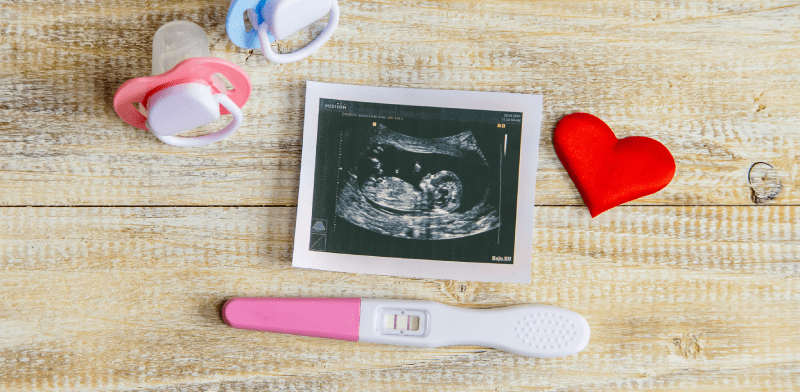A Framework for Understanding Twinning
This report provides a comprehensive analysis of the factors that influence the likelihood of a twin pregnancy. It is structured to first build a foundational biological understanding, then detail both natural and medically-assisted pathways, and finally, present a critical analysis of the associated risks and realities. The core finding is that while certain factors can increase the chances of a twin pregnancy, particularly fraternal twins, the medical community actively works to mitigate this outcome due to significant health and financial risks. This report is not a prescriptive guide but a framework for making a fully informed decision in close consultation with a qualified healthcare professional.
The Biology of Twinning: A Foundational Understanding
To understand how to influence the likelihood of a twin pregnancy, it is essential to first distinguish between the two distinct biological mechanisms of twinning. The user’s query about how to have twins is fundamentally a question about increasing the chances of one specific type of twinning, as the other is an uninfluenceable, spontaneous event.
1.1. Identical vs. Fraternal Twins: Distinct Biological Mechanisms
The two types of twins, identical and fraternal, form through entirely different processes. Identical twins, also known as monozygotic twins, result from the fertilization of a single egg by a single sperm. After fertilization, this single egg spontaneously splits into two embryos that develop into two babies with exactly the same genetic information. This splitting is a random biological event and is not influenced by heredity or any other known factors. The occurrence of identical twins is relatively rare, accounting for only about three to four per 1,000 births.
In contrast, fraternal twins, or dizygotic twins, form when two separate eggs are fertilized by two different sperm during the same pregnancy. Because they originate from separate eggs and sperm, these twins are genetically unique, akin to any other siblings who simply share the same womb. They can be of the same sex or different sexes and may not have similar appearances. The critical factor in fraternal twinning is a biological event called hyperovulation, where the ovaries release more than one egg in a single menstrual cycle. Any method, whether natural or medical, that is thought to increase the likelihood of twins does so by promoting this process of hyperovulation, a mechanism that only leads to the conception of fraternal twins.
1.2. The Genetic Basis of Dizygotic Twinning
The ability to hyperovulate and conceive fraternal twins has a well-established genetic basis, primarily influenced by the maternal lineage. A family history of multiple pregnancies on the mother’s side significantly raises a woman’s chances of having twins. Research has identified specific genes on chromosomes 1, 11, and 15 that are associated with an increased likelihood of fraternal twins, confirming that this trait is heritable and runs in families.
This genetic predisposition is what gives rise to the popular, but often misunderstood, belief that twins can “skip a generation.” This phenomenon is not a biological rule but rather a statistical outcome of how the gene for hyperovulation is inherited. The trait is a result of the mother’s reproductive physiology; the father’s sperm does not decrease or increase the chance of his partner conceiving fraternal twins. Therefore, if a woman with the hyperovulation trait has only sons, the trait is passed on to the sons, but it will not be expressed until it is inherited by their daughters. When these granddaughters have children, the trait for hyperovulation can “reappear,” making it seem as if the tendency for twinning skipped a generation. This pattern is merely a reflection of the sex-specific expression of the underlying genetics.
Natural Factors Influencing the Likelihood of Twins
Beyond a direct genetic predisposition, several non-medical factors are scientifically correlated with a higher chance of a twin pregnancy. These factors collectively increase the likelihood of spontaneous hyperovulation.
2.1. Demographics and Heredity: A Global Perspective
The incidence of twinning varies across different populations. African-American women are more likely to have twins than any other race. In contrast, Asian and Native American women have the lowest twinning rates. While Caucasian women have a lower overall twinning rate than African-American women, they have the highest rate of higher-order multiple births (triplets or more), particularly those over the age of 35. These demographic differences, combined with the established link to a family history of twins on the maternal side, underscore the role of biological and genetic factors in determining the natural rate of twinning.

2.2. Maternal Age and Parity: The Hormonal Connection
A woman’s age and previous pregnancy history are significant determinants of her natural twin-bearing potential. Women older than 30 have a greater chance of multiple conception. This is because as a woman ages, her body produces higher levels of Follicle-Stimulating Hormone (FSH), which can stimulate the ovaries to release multiple eggs during ovulation, thereby increasing the chance of fraternal twins. This physiological change is, in essence, a natural and mild version of the hormonal stimulation used in fertility treatments.
Similarly, a history of previous pregnancies, especially a prior multiple pregnancy, raises the chances of having multiples. Some research suggests that the body may be more likely to release multiple eggs after having had multiple pregnancies.
2.3. The Influence of Maternal Body Mass Index
Studies suggest a correlation between a woman’s body mass index (BMI) and the likelihood of conceiving twins. Taller women and those with a higher BMI may have a slightly increased chance of conceiving fraternal twins. This is thought to be related to higher levels of insulin-like growth factor (IGF), a hormone that may promote multiple ovulations.
The following table summarizes the key natural factors influencing the likelihood of a twin pregnancy, providing a quick reference to the general rates of natural twinning in the general population.
| Factor | Description | Likelihood of Twins |
| Heredity | Maternal family history of multiple pregnancies | Increases likelihood by a factor of 5 for subsequent twin pregnancies. |
| Maternal Age | Women over 30 years old | Higher chance of multiple conception. |
| Parity | One or more previous pregnancies | Increases the chances of multiples. |
| Race | African-American women have the highest rate. | Highest rate of twinning. |
Medical Interventions to Increase the Chances of Twins
For individuals actively seeking to increase their chances of a twin pregnancy, medical interventions offer the most significant, scientifically-backed pathways. However, these treatments are not undertaken with the primary goal of creating a multiple pregnancy, a reality that must be understood.
3.1. Ovulation-Inducing Medications: Efficacy and Multiple Pregnancy Rates
Fertility drugs are designed to stimulate the ovaries to produce and release multiple eggs, a process that directly leads to a higher chance of a fraternal twin pregnancy.
- Clomiphene Citrate (Clomid): This oral medication is a selective estrogen receptor modulator that stimulates the release of Follicle-Stimulating Hormone (FSH) and Luteinizing Hormone (LH) from the pituitary gland, thereby prompting the ovaries to produce more than one egg. The use of Clomid can result in a 5-12% chance of a twin pregnancy.
- Gonadotropins: These are more potent injectable hormones that can push the twin pregnancy rate to as high as 30%.
3.2. Intrauterine Insemination (IUI): The Synergy with Fertility Drugs
Intrauterine Insemination (IUI) involves the controlled introduction of sperm directly into the uterus. IUI on its own, without the use of fertility drugs, does not alter the natural ovulation process and therefore does not increase the chances of twins. However, when combined with ovulation-stimulating medications, IUI can result in twin pregnancy rates ranging from 10-30% per couple.
A critical consideration with this approach is the clinical management of risk. The chance of a multiple pregnancy is directly tied to the number of mature follicles produced. The risk of multiples is 2.5 times higher with two follicles, 3.6 times higher with three, and can be as much as 5 times higher with five. To mitigate the heightened risks of high-order multiples (triplets or more), clinics often have a safety threshold. If more than three follicles have matured, a healthcare provider may decide to cancel the IUI procedure altogether to protect the health and safety of the potential fetuses and the mother.
3.3. In Vitro Fertilization (IVF): From Historical Trend to Modern Paradigm
Historically, In Vitro Fertilization (IVF) was strongly associated with multiple births because a high number of embryos were transferred to increase the odds of a successful pregnancy. However, the medical community has since shifted its approach. The modern paradigm in IVF is a focus on single embryo transfer (SET) whenever possible, precisely to prevent the very outcome of a multiple pregnancy.
Reproductive endocrinologists now widely promote a singleton pregnancy because it is considered “so much healthier” for both the mother and the baby. While IVF can result in fraternal twins if multiple embryos are transferred, it can also lead to identical twins, even when only one embryo is transferred. The chance of a single embryo splitting to create identical twins is higher after IVF than in natural conception. This reality highlights a fundamental conflict: while the user may be seeking a twin pregnancy, the medical professional’s primary objective is to use the most effective and safest method to produce a healthy, singleton birth, thereby minimizing a host of severe complications.
The table below provides a comparative overview of the twin pregnancy rates associated with different fertility treatments.
| Method | Description | Twin Pregnancy Rate |
| Natural Conception | Spontaneous occurrence | 1-2% |
| Clomiphene Citrate | Oral medication to stimulate ovulation | 5-12% |
| Gonadotropins | Injectable hormones to stimulate ovulation | Up to 30% |
| IUI with Medication | Artificial insemination combined with fertility drugs | 10-30% per couple |
| IVF | Varies based on number of embryos transferred | Decreasing due to trend toward single embryo transfer |
Critical Considerations: The Risks of a Multiple Pregnancy
A multiple pregnancy is not merely a double joy but a high-risk medical condition. The medical community’s shift away from methods that intentionally promote multiples is a direct response to the significant health risks for both the mother and the babies. These risks should be a primary consideration for anyone contemplating a twin pregnancy.
4.1. Health Risks for the Mother
The physiological demands of carrying more than one fetus place the mother at a significantly higher risk for complications. Women with a multiple pregnancy are more than twice as likely to develop gestational hypertension (high blood pressure) and preeclampsia , a condition that can lead to early delivery or placental abruption. Gestational diabetes is also more common due to the larger size of the placenta, which produces more hormones. Anemia, a deficiency in healthy red blood cells, is more than twice as common in multiple pregnancies because of the greater nutritional demands. The physical strain and over-distended uterus also increase the risk of postpartum hemorrhage (severe bleeding after delivery) and the likelihood of needing a Cesarean delivery due to abnormal fetal positions.

4.2. Health Risks for the Babies
The most common and severe complication for twins is preterm labor and birth. Over 60% of twin pregnancies and nearly all higher-order multiples are born prematurely, before 37 weeks gestation. The average length of a twin pregnancy is approximately 36.4 weeks. Premature babies often have low birth weights (less than 5.5 pounds), and their bodies and organs may not be fully matured, requiring intensive care in a Neonatal Intensive Care Unit (NICU).
Multiple birth babies also have about twice the risk of congenital abnormalities, including neural tube defects like spina bifida, and gastrointestinal and heart abnormalities. The phenomenon of “vanishing twin syndrome,” where one fetus is miscarried, usually in the first trimester, is more common in multiple pregnancies.
4.3. The Unique Perils of Monochorionic Twins
A unique and significant set of complications can occur with identical twins who share a single placenta, a situation that cannot be influenced by any action but is a spontaneous risk in any twin pregnancy.
- Twin-to-Twin Transfusion Syndrome (TTTS): This is a serious placental condition that affects about 15% of identical twins who share a placenta. Blood vessels within the shared placenta connect and divert blood unequally from one fetus (the donor) to the other (the recipient). The recipient fetus receives too much blood, which can overload their cardiovascular system, while the donor fetus does not get enough, leading to growth restriction and low amniotic fluid.
- Other Shared Placenta Complications: Other risks include selective growth restriction, where one twin is significantly smaller than the other ; Twin Anemia Polycythemia Sequence (TAPS), a rare imbalance in blood flow ; and the risk of cord entanglement for twins who share the same amniotic sac, which can interrupt blood flow to one or both babies.
The table below provides a comprehensive summary of the major health risks associated with a multiple pregnancy.
| Risk Category | Specific Complication | Description and Context |
| For the Mother | Gestational Hypertension & Preeclampsia | More than twice as likely to develop high blood pressure. |
| For the Mother | Anemia | More than twice as common due to higher nutritional demands. |
| For the Mother | Postpartum Hemorrhage | Increased risk of bleeding after delivery. |
| For the Mother | Cesarean Delivery | A higher likelihood of C-section due to abnormal fetal positions. |
| For the Mother | Gestational Diabetes | More common due to larger placental size and hormone production. |
| For the Babies | Preterm Labor and Birth | Over 60% of twins are born before 37 weeks. |
| For the Mother | Low Birth Weight | A common consequence of prematurity. |
| For the Mother | Birth Defects | About twice the risk of congenital abnormalities. |
| For the Mother | Vanishing Twin Syndrome | Higher risk of miscarriage of one fetus, usually in the first trimester. |
| For the Mother | Twin-to-Twin Transfusion Syndrome (TTTS) | Affects 15% of identical twins sharing a placenta. |
| For the Mother | Cord Entanglement | A risk for identical twins sharing an amniotic sac. |
The Pragmatic and Financial Realities
Beyond the biological and medical considerations, the decision to pursue a multiple pregnancy through medical intervention carries significant pragmatic and financial implications.
5.1. The Financial Landscape: A Detailed Cost Analysis of Fertility Treatments
In Vitro Fertilization (IVF) is one of the most effective, but also most expensive, fertility treatments. The average cost for a single cycle of IVF treatment ranges from $12,000 to $15,000, though this does not include all potential fees. Ancillary costs such as fertility medications, which can be an unexpected and substantial expense, can add an additional $3,000 to $7,000 per cycle. Other fees include genetic testing (e.g., Preimplantation Genetic Testing, or PGT), cryopreservation, and storage of embryos.
It is also critical to understand that the initial quoted price is often not the total cost. The average patient requires 2.3 to 2.7 IVF cycles to achieve a successful pregnancy, bringing the average total expenditure to nearly $50,000. This is because only about 29.7% of patients achieve success on their first embryo transfer. The financial reality of pursuing a twin pregnancy via fertility treatment is a significant, high-stakes investment with no guarantee of success.
The table below provides a detailed breakdown of the average costs associated with IVF.
| Cost Category | Average Price Range | Description |
| Single IVF Cycle | $12,000-$15,000 | Includes medical treatment, monitoring, egg retrieval, anesthesia, and transfer. |
| Fertility Medications | $3,000-$7,000 | Injectable hormones to stimulate ovulation, often not included in the base cost. |
| Additional Services | Varies | Includes genetic testing (e.g., PGT, which costs $4,800-$6,000), cryopreservation, and donor material costs. |
| Total Average Cost | ~$50,000 | The average total cost for a patient to achieve a successful pregnancy, which may require multiple cycles. |
5.2. Debunking Myths: Scientific Evidence vs. Folklore
Many unproven claims and folk remedies for increasing the chances of conceiving twins exist, but they are not supported by scientific evidence. There is no scientific basis to support the claim that specific diets, eating certain foods like yams or dairy, or the timing of intercourse can increase the likelihood of conceiving twins. The theory that yams, a staple in certain regions of Nigeria with high twinning rates, are responsible is based on a misunderstanding of a naturally occurring compound within the plant. While yams contain diosgenin, which can be used in a laboratory to synthesize hormones, the human body cannot perform this conversion. Therefore, the consumption of such foods does not increase a woman’s hormonal levels or her chances of hyperovulation.
5.3. Nutritional Requirements and Specialized Care
Once a twin pregnancy is established, it requires specialized care and increased nutritional support. A woman carrying two or more fetuses needs more calories, protein, and other nutrients, including iron, to prevent anemia. While the exact caloric increase can vary based on pre-pregnancy weight, a twin pregnancy requires significantly more calories in each trimester. The need for folic acid is also higher, with some guidelines recommending a total intake of 1000 µg per day. This highlights that a twin pregnancy is a state of greater nutritional demand and requires careful management to ensure the health of both the mother and the fetuses.
Section 6: Concluding Synthesis: An Informed Approach to Family Planning
The pursuit of a twin pregnancy involves navigating a complex landscape of biological, medical, and financial realities. The evidence indicates that while certain natural factors, such as maternal age and genetics, can provide a slight increase in the chance of fraternal twins, these factors are not easily manipulated. The most significant increases in the likelihood of a multiple pregnancy are achieved through medical interventions, specifically ovulation-inducing drugs and the transfer of multiple embryos during IVF.
However, the analysis of these methods reveals a critical tension: the medical community’s primary objective is to use these treatments to achieve a single, healthy pregnancy, actively working to mitigate the very outcome of multiples due to the profound health risks involved. A twin pregnancy is inherently a high-risk condition, with significant potential complications for both the mother and the babies, including a high rate of preterm birth, birth defects, and specialized placental disorders like Twin-to-Twin Transfusion Syndrome.
Furthermore, the path to a medically assisted pregnancy is a substantial financial and emotional commitment with no guarantee of success. The average patient requires multiple cycles, bringing the total cost to tens of thousands of dollars for an uncertain outcome.
Therefore, the most responsible and essential step for anyone considering this journey is a thorough consultation with a qualified healthcare professional. Only a reproductive endocrinologist or maternal-fetal medicine specialist can provide personalized guidance, evaluate individual health factors, and present a clear picture of the risks and benefits. This expert guidance is not an optional step but a necessary prerequisite to making a safe and fully informed decision about family planning.



